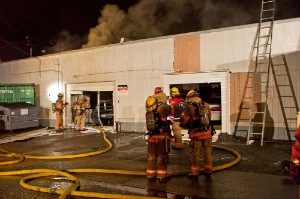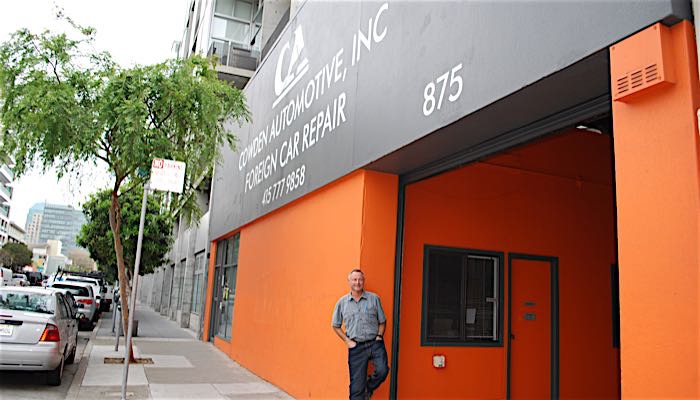An electrical short in a power strip cord and three electrical panels resulted in fire losses at four businesses totaling over $3.6 million. Discarded cigarettes were reported to be the cause of fires in two other instances resulting in losses of almost $1.3 million.

In each of these cases, there was extensive damage to the buildings, inventory and equipment. Business was disrupted, customers inconvenienced and profits lost forever. According to statistics, some of these companies will never recover. They will either never reopen or will be out of business within five years.
It is a fact that many businesses close their doors for good following a serious fire. Insurance will generally reimburse you for the building, equipment and stock lost in a fire. The one critical loss they cannot replace – customers. There will be a period of time when you cannot provide the service or products they want. When this happens, your customers can become someone else’s customers. The best way to keep your automotive business and customer base intact is to invest time and effort in fire prevention.
Ignition sources
The first step in fire prevention is to identify the most common sources of ignition. For most automotive businesses they are electrical equipment, arcing or overloading; cutting and welding; spontaneous ignition or chemical reaction; smoking; and furnaces and hot water heaters. Once the ignition sources have been identified and located within your facility, they must be separated from all flammable and combustible materials. Separation is accomplished through distance or by implementing appropriate control measures including the following:
Electrical equipment, arcing or overloading
• Establish a three-foot clear zone in front of electrical panels and transformers.
• Remove unapproved extension cords from your facility.
• Do not substitute extension cords for permanent wiring.
• Keep combustibles at least 12 to 18 inches away from fluorescent light fixtures.
• Beware of unauthorized electrical appliances, especially small electric heaters.
• Retain a competent electrical contractor to perform regular inspections of electrical systems.
Cutting and welding
• Establish approved, isolated areas for cutting and welding operations.
• Train employees in the safe operation of welding and firefighting equipment.
• Station adequate fire extinguishing equipment nearby.
• Remove all combustibles from the area; hot sparks may land up to 35 feet away.
• Sweep the floors clean in the area surrounding the welding or cutting activity.
• Never weld adjacent to containers of flammable liquids, including automotive gas tanks.
• Assign a “fire watch” to monitor the area for 30 minutes after welding.
• Inspect welding apparatus on a regular basis to ensure it is in proper working order.
Spontaneous ignition or chemical reaction
• Soiled rags and uniforms should be stored in closed metal containers.
• Rags soaked in gas, oil, paint or thinner should be placed in approved, self-closing metal cans.
• Battery charging areas must be well-ventilated to prevent a build-up of explosive hydrogen gas.
• Combustible materials should not be stored close to sources of heat; they can undergo a chemical change that results in a lower ignition temperature.
Smoking
• A 100% “smoke-free” environment is preferred.
• Paint and body shops should be posted (and enforced) as “No Smoking” areas.
• If smoking is permitted, establish approved smoking areas and provide appropriate receptacles.
Furnaces and hot water heaters
• Retain a qualified contractor to inspect all heating equipment and furnaces prior to winter.
• Clear the immediate area of all combustible materials.
• Do not store janitorial or other paper supplies inside furnace closets or next to water heaters.
• Clean and inspect all flues prior to using equipment.
• Maintain a safe distance between overhead heaters and all combustible storage.
Flammable and combustible materials
Flammable and combustible materials provide a fuel source that is easily ignited and can spread fire throughout a facility. Control measures for flammable and combustible materials commonly found in automotive businesses include the following:
Gasoline
• Never use gasoline as a solvent. There are many other less flammable alternatives.
• Store gasoline outside the building whenever possible.
• If it must be stored inside, keep gasoline in FM or UL approved “safety cans.”
• Always transfer gasoline out of tanks prior to removing them from the vehicle.
• Gasoline transfer operations should be conducted outside.
• Transfer the gasoline using an approved “gas caddy” or equivalent, never into open containers.
• Clean up all spills as quickly as possible.
• Avoid using incandescent utility lights around gasoline. Sealed fluorescent lights are safer.
Other flammable and combustible liquids
• Use nonflammable solvents, not gasoline, for parts cleaning.
• Store flammable and combustible liquids inside approved storage cabinets.
• Limit quantities of flammable liquids in the work area to a one day supply.
• Store large containers of flammables, such as 55 gallon drums, outside or in approved rooms equipped with explosion-proof electrical fixtures and 24-hour ventilation system.
For questions about fire prevention in your shop, contact the Zurich Risk Engineering Department at 800-821-7803 or visit www.zurichna.com/zdu.

